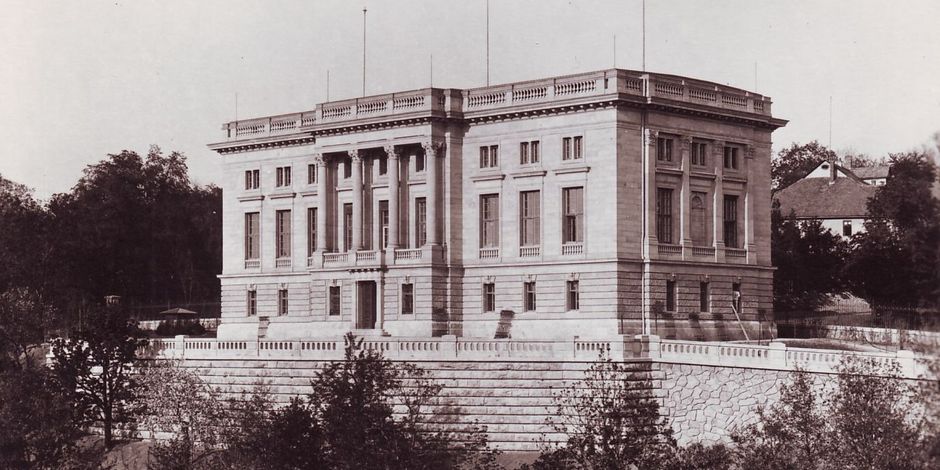Projects of the Klassik Stiftung Weimar are funded by the European Regional Development Fund (ERDF) and the Free State of Thuringia, represented by the State Chancellery of Thuringia, Department of Culture and the Arts.

History
The archive was founded after Goethe’s grandson Walther passed away and bequeathed his grandfather’s estate to Grand Duchess Sophie of Saxony-Weimar and Eisenach on 15 April 1885. In 1889 the Gleichen-Russwurm family – Schiller’s last living descendants – donated the poet’s written estate to the archive as well, at which time the archive was renamed the “Goethe- und Schiller-Archiv”.
„I have inherited, and Germany and the world shall inherit with me.“
Quoted remark by Grand Duchess Sophie of Saxony-Weimar-Eisenach
The early years
As the archive’s holdings rapidly expanded with financing from the ducal house and the Goethe Society, founded in 1885, Grand Duchess Sophie commissioned the construction of what is now the Goethe- und Schiller-Archiv between 1893 and 1896.
At the start of the First World War, the archive possessed 35 literary estates along with the estates of some of most prominent names of the Classical period (e.g. Herder, Wieland, Knebel, Riemer, Chancellor von Müller, Johann Heinrich Meyer and Bertuch) and others from the late 19th century (e.g. Freiligrath, Immermann, Otto Ludwig, Fritz Reuter and Hebbel).
The most important achievement of those early decades was the Weimar edition of Goethe’s works, also known as the “Sophie Edition” named after Grand Duchess Sophie who had initiated it. Between 1887 and 1919 the archive had published four sections of the edition totalling 143 volumes.
Weimar Republic
Between the two world wars, the archive made some preliminary and long-overdue progress in cataloguing the collection holdings. The most important acquisition was made in 1924 with the addition of Georg Büchner’s estate, a donation by Anton Kippenberg. From 1924 to 1947, the Goethe- und Schiller-Archiv was managed by an administrative alliance between the state of Thuringia, the house of Saxony-Weimar-Eisenach and the Goethe Society.
The post-war years
In the 1950s the archive succeeded in acquiring the estates of Franz Liszt and Friedrich Nietzsche. In 1953 the Goethe- und Schiller-Archiv was made a department of its own under the newly established National Research and Memorial Sites of Classic German Literature in Weimar (NFG). In the following years, the archive launched an extensive programme to catalogue its entire holdings which had meanwhile grown to approximately 60 estates.
After German reunification
Like the other institutions of the NFG, the Goethe- und Schiller-Archiv with its more than 110 personal and institutional estates was integrated into the Stiftung Weimarer Klassik – today the Klassik Stiftung Weimar – in October 1991. The technical capabilities of the archive improved considerably in the following years and the efforts to catalogue the collections continued, no longer with the aid of find books, but rather a new archival database. The archive also began developing and presenting numerous exhibitions to the general public. During a week-long festival from 24 to 29 June 1996, the archive hosted numerous events and festivities marking the 100th anniversary of the grand opening of the archive building.
Renovation and expansion
Following several alterations and additions to the building, the archive underwent extensive renovation and expansion from 2010 to 2012. The measures included subterranean stacks and new offices in the basement level, and the installation of workshops for paper restoration and digitalisation on the top floor.

